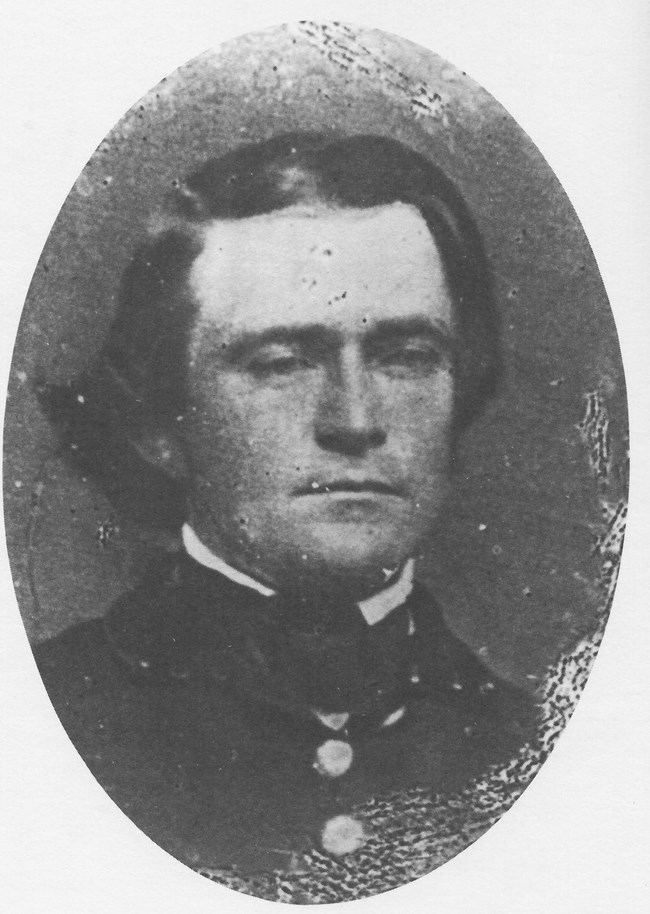Last updated: January 14, 2021
Article
Ulysses S. Grant's Early Interactions with Native Americans

Ulysses S. Grant Cottage State Historic Site
President Ulysses S. Grant outlined a vision for his presidency during his First Inaugural Address in March 1869. Most of the speech centered on political and economic issues the country faced in the aftermath of the Civil War, which had ended roughly four years earlier. However, there was a small paragraph that reflected Grant’s thinking towards the country’s Native Americans. During the speech he suggested that “the proper treatment of the original occupants of this land—the Indians—[is] one deserving of careful study. I will favor any course toward them which tends to their civilization and ultimate citizenship.” Grant had limited interactions with Indigenous people dating back to his days as a young officer in the United States Army. His attitude at the inauguration reflected a genuine desire to reform federal Indian policy, but also a desire to change the customs and lifeways of the various Indian nations in the West.
Grant’s first documented thoughts on Native Americans date to his time as a cadet at the United States Military Academy, where he painted a Native American trading scene for his drawing class. Later, Grant encountered Indigenous people while serving in the Mexican American War (1846-48) and on the Pacific coast (1852-54). In a June 26, 1846 letter describing events in Mexico, Grant wrote to an Ohio friend, John W. Lowe, “The People of Mexico are a very different race of people from ours. The better class are very proud and [tyrannize] over the lower and much more numerous class as much as a hard master does over his negroes, and they submit to it quite as humbly. The great majority [of the] inhabitants are either pure or more than halfblooded Indians, and show but little more signs of neatness or comfort in their miserable dwellings than the uncivilized Indian.” This early observation of Grant’s is revealing. On the one hand, he sympathized with the plight of Mexican Indians and the encroachments made against them. Grant event went so far as to compare the abuses of Mexican Indians to the evils of slavery in the United States. But Grant’s referencing of “uncivilized” Indians suggests that he may have viewed at least some Indigenous people in a negative, inferior light. Years later these views would still be evident when Grant offered his First Inaugural Address.
When Grant was ordered with the 4th US. Infantry to the Pacific Coast in 1852, he continued to occasionally write about Native Americans. While at Columbia Barracks, Oregon Territory, Grant wrote a letter to his wife, Julia Dent Grant, who was living back at White Haven in St. Louis, Missouri. In this letter, dated March 19, 1853, Grant responded to a letter Julia had previously written to him. “You charge me to be cautious about riding out alone lest the Indians should get me. Those about here are the most harmless people you ever saw. It is really my [opinion] that the whole race would be harmless and peaceable if they were not put upon by the whites.”

The Papers of Ulysses S. Grant, Volume 1, and the United States Military Academy
In the Personal Memoirs of Ulysses S. Grant, written during the last year of his life, Grant reflected on his experiences with Native Americans while stationed on the Pacific Coast. Again, he used mixed signals. “While I was stationed on the Pacific coast, we were free from Indian Wars,” he recalled. This experience was unique compared to many of his military peers who fought in various military conflicts with Indian tribes in the West before the Civil War. Grant wrote of the tribal “remnants” living around him and pointed out that diseases such as measles and smallpox had decimated the tribes of the Pacific Northwest. In contradictory terms, he suggested that “they had generally acquired some of the vices of civilization, but none of the virtues, except in individual cases.” In the same paragraph, however, he wrote that interactions with white trading groups such as the Hudson Bay Company “had brought out the better qualities of the savages” and alluded to Indigenous nations successfully engaged in farming, raising cattle and horses. Nevertheless, the use of the term “savage” emerges from Grant’s ideas about Manifest Destiny and the superiority of White American society.
Before the American Civil War, federal Indian policy was a great concern within the United States government and military. However, it was almost always from an “us vs. them” mentality. Indigenous people were not afforded the same rights as White Americans and were constantly subjected to violence and forced removal from ancestral homes. The policy that Ulysses S. Grant outlined in his Inaugural Address expressed a desire to include Indigenous people into the American Citizenry. Nevertheless, Grant’s attitudes and intentions were still under the guise of American Anglo-Saxon exceptionalism. To him, Native Americans would gladly welcome the chance to become “civilized” and to become citizens within the American framework. Some Indian nations opposed these proposed changes and were ready to wage war against the U.S. government to maintain their way of life. And all tribes certainly did not view their way of life as “savage.” Ultimately, President Grant’s influence and legacy when it comes to federal Indian policy remains a point of debate among historians today.
John Y. Simon, ed., The Papers of Ulysses S. Grant, Volume 1: 1837-1861. Carbondale: Southern Illinois University Press, 1967.
